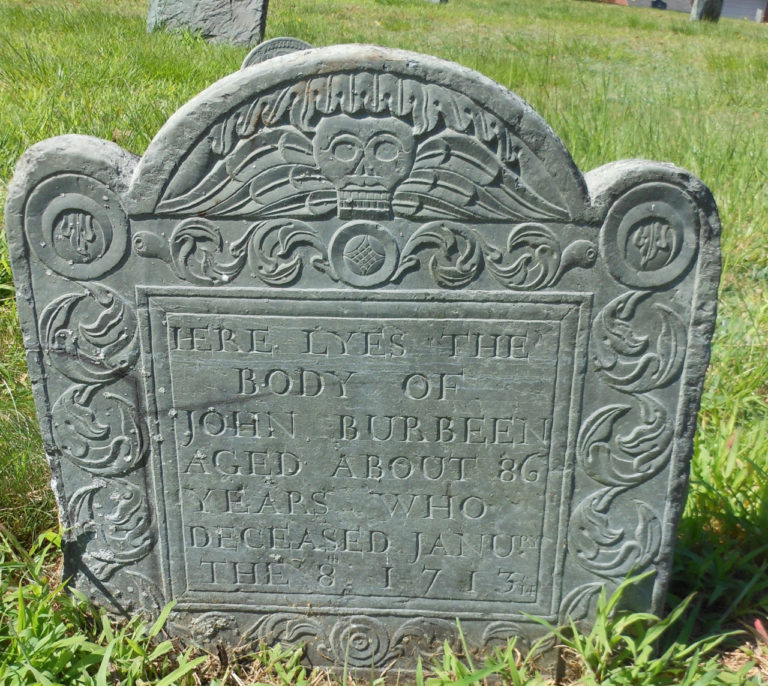This article is from the free online
Archaeology and the Battle of Dunbar 1650: From the Scottish Battlefield to the New World


Reach your personal and professional goals
Unlock access to hundreds of expert online courses and degrees from top universities and educators to gain accredited qualifications and professional CV-building certificates.
Join over 18 million learners to launch, switch or build upon your career, all at your own pace, across a wide range of topic areas.

 The probate inventory of Robert Mackclaffin, 1690. This is transcribed below in full in the PDF download. Image courtesy of New England Historic Genealogical Society, Boston, AmericanAncestors.org.
The probate inventory of Robert Mackclaffin, 1690. This is transcribed below in full in the PDF download. Image courtesy of New England Historic Genealogical Society, Boston, AmericanAncestors.org.  John Burbean’s gravestone in First Burial Ground, Woburn, Middlesex County, Massachusetts. ‘Here lyes the body of John Burbeen, aged about 86 years, who deceased January the 8th 1713’. Photograph by kind permission of Jack Parker.
John Burbean’s gravestone in First Burial Ground, Woburn, Middlesex County, Massachusetts. ‘Here lyes the body of John Burbeen, aged about 86 years, who deceased January the 8th 1713’. Photograph by kind permission of Jack Parker.





